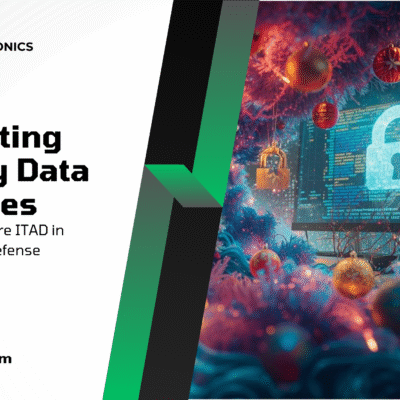Introduction
In today’s digital world, businesses generate and store vast amounts of sensitive data, from customer information to financial records. But what happens when IT assets reach the end of their lifecycle? Simply deleting files or reformatting a hard drive is not enough to protect your business from data breaches. Without proper data destruction, confidential information remains vulnerable, potentially leading to financial loss, legal consequences, and reputational damage.
Ensuring secure data destruction is a critical aspect of IT asset disposition (ITAD). This process prevents unauthorized access to sensitive data and helps businesses comply with data privacy regulations. In this guide, we’ll explore why data destruction is essential, how improper disposal poses risks, and what best practices businesses should follow.
📌 Related: How to Choose an ITAD Vendor You Can Trust
Understanding Data Destruction
Data destruction is the process of permanently erasing or physically destroying data storage devices to prevent any possibility of data recovery. Businesses rely on hard drives, SSDs, servers, and mobile devices to store sensitive information, but when these assets are no longer in use, they must be properly sanitized.
There are three primary methods of data destruction:
- Data Wiping – Overwrites existing data using specialized software, ensuring that files cannot be recovered.
- Degaussing – Uses a high-powered magnetic field to erase data stored on magnetic media like hard drives and tapes.
- Physical Destruction – Shredding, crushing, or incinerating devices to render them completely unreadable.
Choosing the right method depends on compliance requirements, asset value, and security policies. Regardless of the approach, businesses must ensure a verifiable chain of custody to track data destruction and maintain compliance records.
📌 Related: Understanding ITAD Reports and Certificates
The Risks of Improper Data Disposal
Many businesses fail to recognize that simply deleting files or formatting a hard drive does not remove data. Even discarded IT equipment in a landfill can become a goldmine for cybercriminals who use data recovery software to access sensitive information.
A lack of proper data destruction exposes businesses to serious risks:
Data Breaches and Cyber Threats
Inadequate data disposal creates a major security gap, allowing hackers to retrieve customer records, financial details, and intellectual property. Stolen data can be used for fraud, identity theft, and corporate espionage, putting businesses and their customers at risk.
Regulatory Violations and Legal Consequences
Governments worldwide have implemented strict data protection laws, requiring businesses to dispose of data securely. Regulations such as GDPR, HIPAA, and SOX mandate that organizations protect sensitive data, even after devices are retired. Failing to comply can result in substantial fines and legal action.
Reputational Damage
A data breach caused by poor IT asset disposal can destroy customer trust and damage a company’s brand. Clients and business partners expect organizations to handle their data responsibly. A security incident related to improper data destruction can lead to loss of customers, negative media attention, and long-term financial consequences.
📌 link: NIST 800-88 Data Destruction Standards
Compliance and Industry Standards
Businesses across industries must adhere to regulatory frameworks that govern data protection. Data destruction plays a key role in maintaining compliance with these standards:
- General Data Protection Regulation (GDPR) – Requires organizations handling EU customer data to securely dispose of personal information.
- Health Insurance Portability and Accountability Act (HIPAA) – Mandates secure destruction of electronic protected health information (ePHI) in the healthcare sector.
- Sarbanes-Oxley Act (SOX) – Enforces strict controls over financial data management, including secure data disposal for publicly traded companies.
- Payment Card Industry Data Security Standard (PCI DSS) – Regulates the handling and destruction of payment card data.
Partnering with a certified ITAD provider ensures compliance with these regulations while minimizing risks associated with data disposal. Businesses should obtain Certificates of Data Destruction as proof that IT assets were securely processed.
📌 Related: Understanding R2 Certification: What It Means for Your Business
Best Practices for Secure Data Destruction
A structured data destruction policy safeguards sensitive information and ensures regulatory compliance. Businesses should follow these best practices:
Implement a Clear IT Asset Disposition Policy
Every organization should establish a standardized process for handling retired IT assets. This includes defining data destruction methods, assigning responsibilities, and ensuring compliance with industry regulations.
Work with a Certified ITAD Vendor
Choosing a trusted ITAD partner is essential for secure data disposal. R2 and e-Stewards-certified ITAD providers follow industry best practices, ensuring that data is properly erased or physically destroyed. Certified vendors also provide tracking and documentation, verifying compliance with data protection laws.
📌 Related: How ITAD Can Help You Meet Your ESG Goals
Maintain an Audit Trail and Obtain Destruction Certificates
Businesses should track IT assets throughout the disposition process to ensure accountability. ITAD providers should issue Certificates of Data Destruction, documenting the method used, date of destruction, and compliance verification.
Use a Combination of Destruction Methods
Depending on the sensitivity of the data, businesses may need to combine software-based and physical destruction techniques. High-security industries such as finance, healthcare, and government agencies often require multi-step destruction processes to prevent any possibility of data recovery.
📌 Related: A Detailed Guide to IT Asset Disposal
Conclusion: Protect Your Business with Secure Data Destruction
Data destruction is a crucial component of business security and compliance. Without proper IT asset disposal, companies risk data breaches, legal penalties, and reputational damage. Implementing a structured ITAD strategy ensures that sensitive information is permanently removed, protecting both business operations and customer trust.
To guarantee secure and compliant data destruction, businesses should:
- Establish clear ITAD policies that define secure disposal methods.
- Partner with certified ITAD vendors for proper data destruction.
- Maintain audit records and obtain Certificates of Destruction for compliance verification.
At IER ITAD Electronics Recycling, we specialize in secure, compliant, and eco-friendly electronic recycling in Colorado Springs and beyond. Contact us today to ensure your IT assets are disposed of safely, sustainably, and in full compliance with industry regulations.





